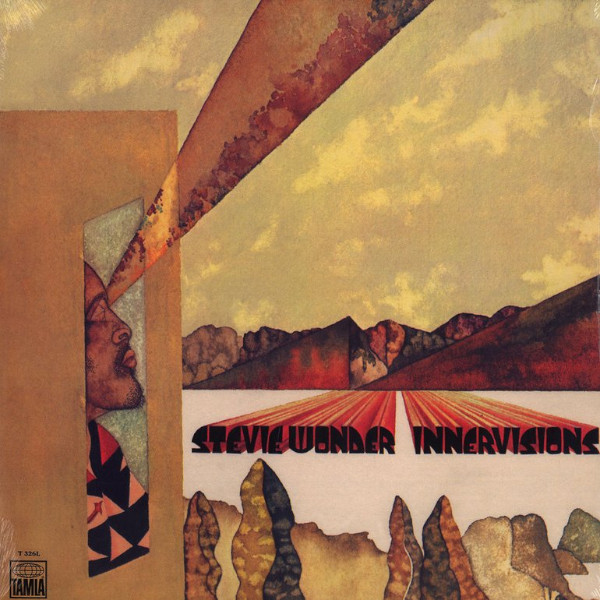Our Favorite Albums #4

4. Stevie Wonder – Innervisions [1973]

Nominated by Andy Chatfield of Center for the Arts Radio Hour, DJ Lukey G of The Guest List, DJ Livor Mortis of Word on the Street, DJ Jagged Little Thrill of What the Funk & Word on the Street, DJ McKenzie of Splitting Hairs & The Beatles: A Week in the Life, DJ Deni of Lovin’ the 70’s, Leith of The Light Fandango, and Big Bent of Dub Revolution (and many more!),
Big Bent says: Higher ground!
With Wonder being the first artist to experiment with the ARP synthesizer on a large scale, Innervisions became hugely influential on the subsequent future of commercial black music. As with many of Wonder’s albums, the lyrics, composition and production of Innervisions are almost entirely his own work, with the ARP used prominently throughout the album. The instrument was a common motif among musicians of the time because of its ability to construct a complete sound environment. Wonder also played all or virtually all instruments on six of the album’s nine tracks, making most of Innervisions a representative one-man band.
The nine tracks of Innervisions encompass a wide range of themes and issues: from drug abuse in “Too High”, through inequality and systemic racism in “Living for the City”, to love in the ballads “All in Love Is Fair” and “Golden Lady”. The album’s closer, “He’s Misstra Know-It-All”, is a scathing attack on then-US President Richard Nixon, similar to Wonder’s song a year later, “You Haven’t Done Nothin'”. “Living for the City” was one of the first soul music songs to deal explicitly with systemic racism and to use everyday sounds of the street such as traffic, voices and sirens, which were combined with the music recorded in the studio. (wikipedia.org)